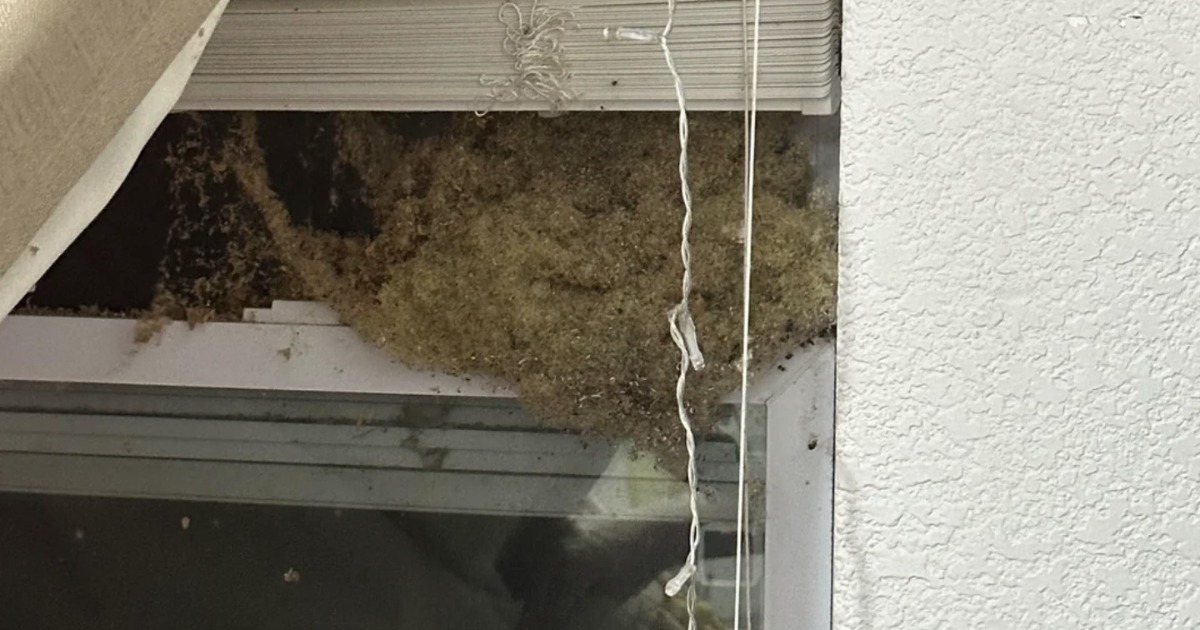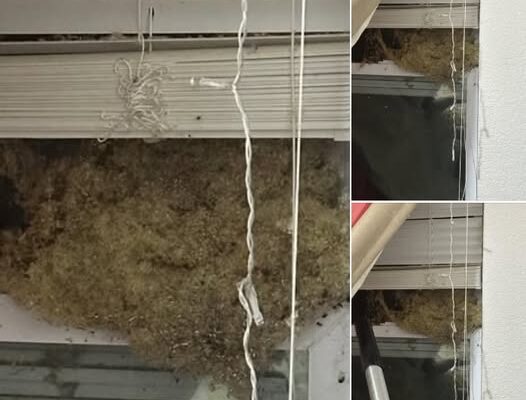Gone for Two Weeks — Returned to a Nightmare
We’d just returned from a two-week trip, ready to relax and help my daughter tidy up her closet. But the moment I pulled back the curtain, I froze. Wedged between the window and the blinds was a thick, brown mass of debris — something was definitely wrong.
At first, we thought it might be mold, or maybe a forgotten bird’s nest. But as we looked closer, the chilling truth revealed itself.
Mice Had Taken Over
What we uncovered was far worse: mice had made a nest inside the wall.
The Telltale Signs
The debris was fibrous and dusty, almost like insulation that had been shredded. Tiny black pellets were scattered throughout. What we initially mistook for wood splinters were actually gnawed-down wall studs and mouse droppings.
The rodents had torn through the insulation, pushing it out through a small gap near the window frame to build their hideout.
It Happened in No Time
Mice only need a hole the size of a dime to get inside — and with the house empty, they moved in quickly. Within days, they’d built nests, left droppings everywhere, chewed through walls, and made themselves perfectly at home.
Gone for Two Weeks—Returned to a Nightmare
We had just gotten back from a two-week trip. While helping my daughter clean her closet, I pulled back the curtain—and froze. A thick, brown wad of debris sat wedged between the window and the blinds.
At first, we assumed it was mold or maybe a bird’s nest. But as we looked closer, the truth became clear.
Mice Had Moved In
What we found was worse than expected: mice had built a nest inside the wall.
Telltale Signs
The debris looked fibrous, dusty—almost like insulation. Scattered throughout were tiny black pellets. What we thought were wood splinters were actually chewed wall studs and mouse droppings.
The rodents had torn into the insulation, then pushed it out through a small gap near the window frame.
It Happened Fast
Mice don’t need much space—just a hole the size of a dime. And with no one home, they took full advantage. Within days, they built nests, left droppings, chewed walls, and made themselves comfortable.

How We Fought Back
We knew we had to act fast:
- Vacuumed the mess: The debris had to go immediately to prevent further spread.
- Inspected the exterior: A tiny gap in the siding revealed where they sneaked in.
- Set snap traps: Peanut butter bait worked—two mice were caught within 48 hours.
- Sealed all entry points: Outside, we stuffed steel wool into holes and sealed with caulk. Inside, expandable foam and metal mesh closed off every gap.
- Disinfected thoroughly: Wearing gloves and masks, we scrubbed every spot tainted with droppings and urine.
Key Takeaways
Rodents don’t waste time. In just two weeks, they shredded insulation, damaged drywall, and possibly gnawed wiring. Even tightly closed windows aren’t enough protection if small gaps exist around the frames.
How to Keep Mice Out
- Seal cracks and holes with caulk, steel wool, or mesh.
- Check window frames and weather stripping for tiny gaps.
- Store food securely and clean up crumbs promptly.
- Set traps where you notice signs of activity.
- Listen for scratching or rustling noises, especially at night.
Final Thoughts
That clump of insulation was more than debris — it was a flashing red warning. Mice are fast, destructive, and opportunistic. If you spot anything suspicious near your walls or windows, don’t hesitate. Act quickly before they move in for good.
